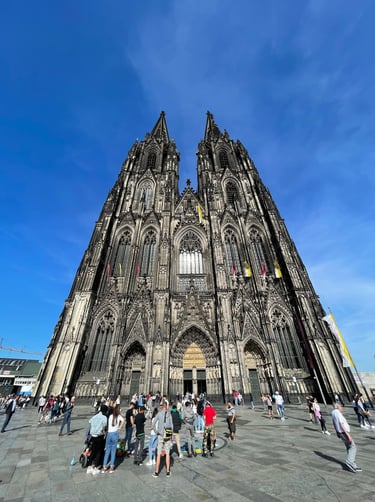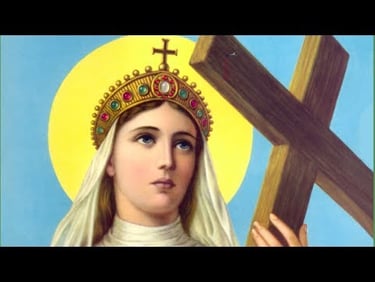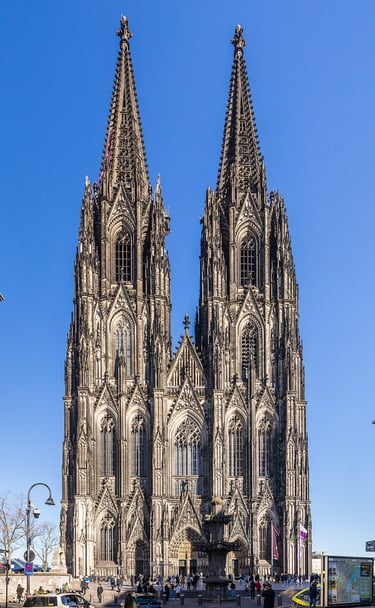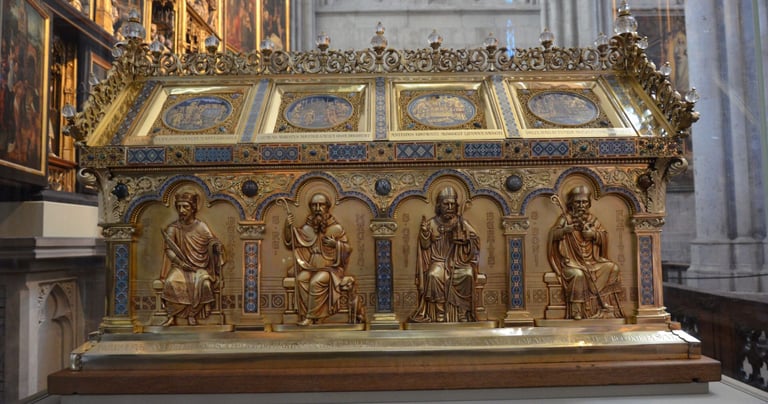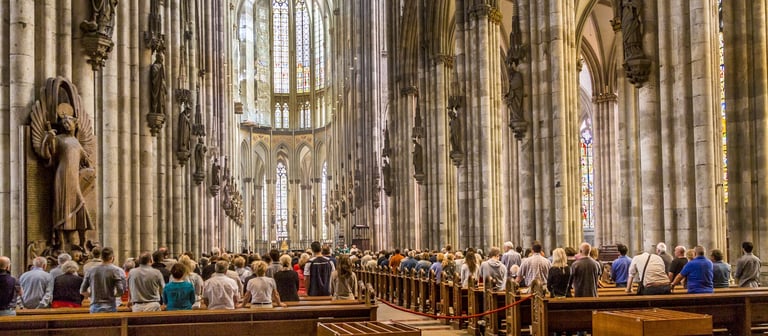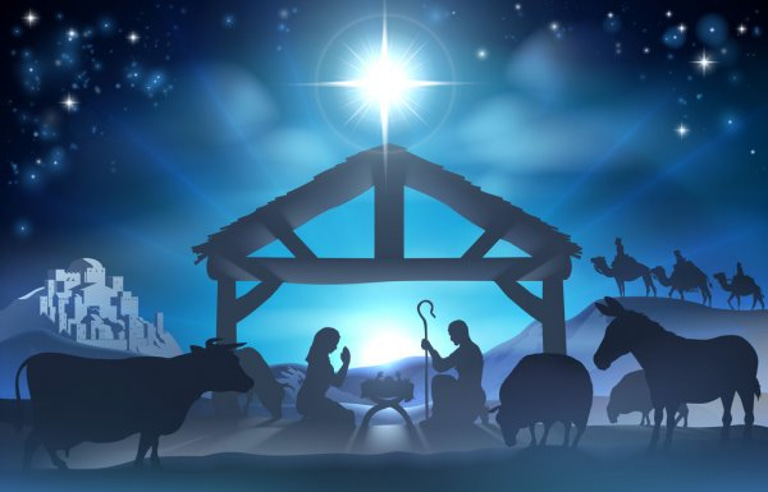Where is the Final Resting Place of the 3 Wise Men?
Uncover the story of the 3 Wise Men and their journey to Cologne. Explore their relics and what they mean. Start your adventure now!
Grace Callahan
1/25/202513 min read
FAQ: The Final Resting Place of the 3 Wise Men
Q1: Where are the relics of the Three Wise Men located today?
A1: The relics of the Three Wise Men are believed to be housed in the Golden Shrine inside Cologne Cathedral, Germany, where they have been since the 12th century.
Q2: How did the relics of the Magi end up in Cologne Cathedral?
A2: The relics were originally discovered by Saint Helena, later moved to Milan, and then transferred to Cologne by Emperor Frederick Barbarossa in 1164 as part of a political and religious strategy.
Q3: Why are the relics of the Wise Men important?
A3: The relics symbolize a tangible connection to the biblical Magi and have been a powerful focus of medieval pilgrimage, faith, and artistic devotion, reinforcing Cologne’s significance in Christian history.
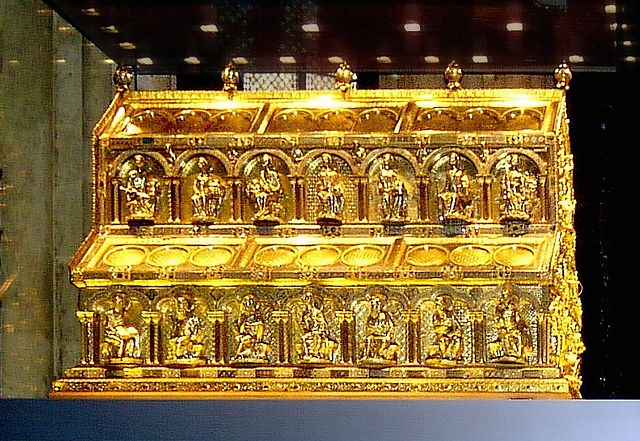

Introduction
The 3 Wise Men, also known as the Magi, embarked on an iconic journey to honor the newborn Jesus with gifts of gold, frankincense, and myrrh. But their story doesn’t end in Bethlehem. Over centuries, tales of their travels and remains have inspired devotion and mystery. Did you know their relics are believed to reside in Cologne Cathedral, Germany? Let’s dive into the journey of these relics and uncover the rich history behind their final resting place.
The Journey of the Wise Men’s Relics
· The story of the Magi didn’t end in Bethlehem—or even in the East, according to Christian tradition. Over centuries, their supposed remains became some of the most venerated relics in Christianity, traveling vast distances and drawing pilgrims from across the medieval world. Let’s trace this fascinating journey.
Early Traditions About the Magi’s Deaths and Burial in the East
· Legends about the Magi’s later lives and deaths vary by region. Early Christian writings suggest they returned to their homelands after visiting the Christ child, where they spread news of the Messiah. Some traditions claim they were martyred for their faith, while others believe they lived out their days in quiet devotion.
· A common thread in these accounts is the idea that the Magi were buried together in the East, perhaps in Persia or India. These burial sites were often described in apocryphal texts, but no archaeological evidence has ever been found to confirm their locations.
The Relics’ Discovery by Saint Helena in the 4th Century
· The journey of the Magi’s relics begins, as many Christian relic stories do, with Saint Helena, the mother of Emperor Constantine. According to tradition, Helena discovered the remains of the Magi during her famed pilgrimage to the Holy Land in the 4th century. She is said to have brought the relics back to Constantinople, where they were enshrined in honor of their connection to the Nativity story.
· While the details of this discovery remain shrouded in legend, it’s worth noting Helena’s significant role in early Christian archaeology. She was also credited with finding the True Cross and other holy artifacts, cementing her legacy as a pivotal figure in preserving and promoting Christian relics.
Transfer of the Relics to Constantinople, Then Milan
· The Magi’s relics didn’t stay in Constantinople for long. In the 5th century, they were reportedly transferred to Milan by the city’s bishop, Eustorgius. The relics were housed in a grand basilica built specifically to honor them, attracting pilgrims and reinforcing Milan’s status as a center of Christian devotion.
· But the journey didn’t end there. In the 12th century, Holy Roman Emperor Frederick Barbarossa seized the relics during his conquest of Milan and transferred them to Cologne, Germany. They were enshrined in the Cologne Cathedral, where they remain to this day.
· The shrine of the Magi in Cologne became one of the most significant pilgrimage sites of the Middle Ages. Its gilded reliquary, an elaborate masterpiece of medieval craftsmanship, continues to draw visitors and inspire awe.
· The journey of the Wise Men’s relics reflects the medieval Church’s fascination with connecting the physical and spiritual realms. Whether or not the relics are authentic, their story adds another layer to the Magi’s enduring legacy—a legacy that stretches across continents, cultures, and centuries.
· If you’d like to explore this further, the Cologne Cathedral’s official site offers detailed insights into the shrine and its history.
How the Wise Men’s Relics Reached Cologne Cathedral
· The journey of the Wise Men’s relics to Cologne Cathedral is a captivating tale of power, faith, and ambition. It intertwines the ambitions of an emperor, the influence of an archbishop, and the shifting tides of medieval politics.
Emperor Frederick Barbarossa’s Role in Transferring the Relics
· In 1164, Holy Roman Emperor Frederick Barbarossa conquered the city of Milan, a key rival in his campaign to consolidate power in northern Italy. As part of his victory, Barbarossa seized the relics of the Magi, which had been housed in the Basilica of Sant’Eustorgio in Milan for centuries.
· For Barbarossa, the relics were more than just sacred artifacts—they were a powerful political tool. By taking possession of such revered items, he could bolster his legitimacy as a ruler chosen and favored by divine providence.
Archbishop Rainald von Dassel’s Influence
· The emperor entrusted the relics to his close ally, Archbishop Rainald von Dassel of Cologne. Rainald was not only a key political figure but also a shrewd ecclesiastical leader with grand ambitions for Cologne.
· Rainald transported the relics to Cologne, where they were enshrined in the city’s cathedral. This move transformed Cologne into one of the most important pilgrimage sites in medieval Europe, rivaling even Rome and Santiago de Compostela. The relics brought immense prestige and wealth to the city, solidifying its status as a spiritual and economic powerhouse.
The Historical and Political Significance of the Move
· The relocation of the Magi’s relics was far more than a religious event—it was a calculated political maneuver. By associating Cologne with the Magi, Rainald and Barbarossa reinforced the city’s importance within the Holy Roman Empire and asserted the emperor’s control over the Church.
· This move also reflected the medieval Church’s reliance on relics as symbols of divine favor and instruments of power. Pilgrimages to Cologne brought a steady stream of visitors, donations, and influence, benefiting both the cathedral and the broader city.
· The relics' arrival in Cologne also spurred the construction of a magnificent new shrine to house them. The Shrine of the Three Kings, completed in the 13th century, remains a masterpiece of Gothic art and a testament to the enduring power of relics in medieval faith and politics.
· The transfer of the Wise Men’s relics to Cologne Cathedral highlights the interplay between faith and power in the medieval world. While their authenticity is impossible to verify, the relics’ impact on Cologne and European Christianity is undeniable.
The Relics and Cologne Cathedral
Cologne Cathedral’s history is inseparably tied to the relics of the Wise Men, and their presence in the city has shaped both its architecture and cultural identity. The cathedral stands as a monumental testament to the intersection of faith, politics, and art in medieval Europe.
Construction of the Cathedral to Honor the Magi
The decision to build a grand cathedral in Cologne was directly influenced by the arrival of the Magi’s relics. In the late 12th century, construction began on what would eventually become one of the most iconic Gothic structures in Europe. The cathedral’s purpose was clear: to honor the relics of the Three Kings and establish Cologne as a key pilgrimage destination.
Architecturally, the cathedral was designed not just as a place of worship but as a focal point of Christian devotion, specifically tied to the relics that would be housed there. The massive scale of the building was meant to reflect the importance of the relics and the divine favor they represented.
I find it fascinating that the cathedral was built as a physical manifestation of Cologne’s role in the spiritual landscape of medieval Europe. It was as if the city itself became a conduit for divine grace, drawing people from far and wide to venerate the relics and partake in the holiness they embodied.
The Golden Shrine of the Three Kings: Its Artistry and Symbolism
At the heart of Cologne Cathedral lies the Golden Shrine of the Three Kings, a masterpiece of medieval craftsmanship. Completed in the 13th century, the shrine is a work of astounding beauty and symbolism. Made of gold and adorned with intricate gemstone inlays, it houses the relics of the Magi and serves as the centerpiece of the cathedral.
Artistic Mastery: The shrine is a stunning example of Gothic art, with elaborate carvings and detailed scenes depicting the journey of the Magi, their arrival in Bethlehem, and the presentation of their gifts. The artistry of the shrine is meant to convey the sanctity and significance of the Magi’s story, making it not just a container for relics but a visual sermon for those who came to worship.
Symbolic Meaning: The shrine's golden exterior and lavish decoration symbolize the heavenly glory and divine kingship of Christ. It’s as if the relics themselves are wrapped in a divine aura, elevating them from mere historical artifacts to holy symbols that bridge the earthly and the celestial.
The symbolism of the shrine is, to me, a powerful reminder of how relics were more than just physical objects in the medieval mindset—they were viewed as conduits of divine grace, capable of transforming the believer’s soul.
Pilgrimages to Cologne and Their Impact on Medieval Europe
With the relics securely enshrined in the Golden Shrine, Cologne Cathedral became one of the most visited pilgrimage sites in Europe. Pilgrims from all corners of Christendom made the journey to see the relics of the Magi, seeking blessings, healing, and spiritual renewal.
Cultural and Economic Impact: Pilgrimages to Cologne brought enormous wealth and cultural exchange to the city. Merchants, artisans, and scholars all flocked to Cologne, contributing to its status as a hub of medieval European life. The influx of pilgrims also led to the development of infrastructure—hotels, inns, and marketplaces—that would shape Cologne’s economic landscape for centuries.
Religious Impact: For the Church, Cologne became a symbol of the Church’s ability to claim and sanctify relics. The relics of the Magi underscored the Church’s role in mediating divine grace, and the popularity of the pilgrimage helped reinforce the centrality of relics in medieval Christian spirituality.
To me, the impact of these pilgrimages cannot be overstated. The story of the Magi, while ancient, continued to inspire and shape the hearts and minds of medieval Christians, connecting them to a sense of collective faith and purpose.
Controversies and Legends Surrounding the Relics
The relics of the Wise Men are not just revered—they’re also surrounded by an aura of controversy, skepticism, and myth. From doubts about their authenticity to theological debates on the nature of relics, the Magi’s remains have sparked intense discussions that continue to this day.
Skepticism About the Authenticity of the Relics
It’s no surprise that the relics of the Three Kings have been the subject of intense skepticism. After all, how can we be sure that these bones—or whatever remains are housed in Cologne Cathedral—actually belonged to the Magi? Scholars have raised questions about the authenticity of many medieval relics, especially ones with such dramatic histories.
Historical Gaps: The journey of the relics from the East to Cologne spans centuries, during which time they passed through various hands—each with their own motivations and claims. Some argue that the relics could easily have been fabricated or mixed with others along the way.
The Politics of Relics: Relics were often used as political tools in the Middle Ages to solidify power and attract pilgrims. Is it possible that the relics of the Magi were "claimed" by various churches to boost their own prestige and influence? The idea isn’t beyond the realm of possibility.
To be honest, the skepticism makes sense. It’s easy to dismiss the relics as mere objects of religious superstition, but it’s also hard to ignore how much they’ve influenced the faith and history of entire regions. Whether genuine or not, the relics’ power is real, and that’s what matters most to many believers.
Theological Debates on Relic Veneration
The question of whether relics should be venerated is one of the most contentious issues in Christian theology. While the Catholic and Orthodox Churches continue to uphold the practice of venerating relics, including the Magi’s, many Protestant denominations reject the idea outright.
Veneration vs. Worship: Catholics and Orthodox Christians distinguish between veneration of relics (honoring them as a means of honoring God) and worship (which is reserved for God alone). Yet, critics argue that such practices can blur the line, leading to idolization of the relics rather than reverence for the divine.
Protestant Reformation: The Reformation in the 16th century sparked fierce debates about the role of relics. Reformers like Martin Luther vehemently rejected the veneration of relics, arguing that it diverted attention from the core tenets of the faith, particularly sola scriptura (scripture alone).
As someone who appreciates the rich history of religious practices, I find the theological debates both fascinating and frustrating. Relics, at their core, serve as tangible connections to the divine and the holy. But can something so material ever fully encapsulate the ineffable nature of faith? That’s where the debates get interesting.
Legends Connecting the Wise Men to Various Other Locations
While the relics of the Magi are enshrined in Cologne, various other legends and claims surround the Wise Men’s story, placing their final resting places in a variety of locations.
Persia and India: Some traditions suggest that the Magi were buried in Persia, where they had originally come from. The idea that they returned home after their visit to Bethlehem and spread the message of Christ is a compelling one.
Constantinople and Milan: Before their journey to Cologne, the relics passed through Constantinople and Milan, sparking legends about their importance and spreading their fame across Europe.
Other European Claims: Cities like Venice and Paris also made claims to possess the remains of the Magi, each offering its own narrative about how the relics ended up there. These competing claims fueled centuries of rivalry between European cities and led to even more myths about the Magi’s travels.
It’s almost as if the Magi’s legacy was too grand to be confined to a single location. Each new city that claimed their relics added a new layer to the story, making the Wise Men not just historical figures but legends in their own right. I can’t help but admire how the mystery of their remains continues to inspire such diverse and imaginative tales.
Modern Day Significance of the Magi’s Resting Place
The resting place of the Wise Men continues to capture the imagination of believers and historians alike. Cologne Cathedral, where the relics are housed, has transcended its historical roots to become a symbol of faith, cultural pride, and artistic inspiration. Let's take a look at the enduring significance of the Magi's relics and their impact today.
The Role of Cologne Cathedral as a Pilgrimage Site Today
Though centuries have passed since the relics of the Magi first arrived in Cologne, the cathedral still remains a major pilgrimage destination. Every year, thousands of visitors, both religious and secular, make their way to Cologne to venerate the relics and experience the awe-inspiring architecture of the cathedral.
Spiritual Significance: For many, the cathedral represents a tangible connection to the ancient story of the Magi and the birth of Christ. The relics, whether one believes in their authenticity or not, provide a focal point for meditation and prayer, as they symbolize the Magi’s journey of faith.
Tourism and Global Reach: Cologne Cathedral is not only a site of Christian pilgrimage but also a major tourist attraction. Its status as a UNESCO World Heritage site and its stunning Gothic design draw millions of visitors each year. The relics continue to be a cornerstone of Cologne's identity, offering a bridge between history, spirituality, and culture.
The fact that the cathedral remains a vibrant center of pilgrimage today speaks volumes about the enduring power of the Magi’s story. It’s as if the relics, whether actual or symbolic, are a continuous invitation to seek something greater than ourselves.
Celebrations of Epiphany in Honor of the Magi
Epiphany, celebrated on January 6th, commemorates the visit of the Magi to the newborn Christ. It’s a day that has become deeply ingrained in Christian liturgical traditions, and Cologne plays a central role in these celebrations.
Liturgical Importance: In Cologne, Epiphany is a grand occasion, marked by special Masses, processions, and events. The relics of the Magi are brought into the spotlight, with many attending services in the cathedral to honor the journey and the divine revelation the Magi experienced.
Cultural Celebrations: In addition to its religious significance, Epiphany has become a cultural event in many regions, especially in countries like Spain, Italy, and Mexico. The “Three Kings” tradition is celebrated with parades, sweets, and festivities that honor the Magi’s role in Christ’s story. In Cologne, the celebrations take on a particularly personal tone, as the city is seen as the earthly home of the Magi’s remains.
Epiphany serves as a reminder that the journey of the Magi is not just a historical event but a living part of Christian tradition. It’s fascinating how this day continues to inspire joy, reflection, and community across the world.
Artistic and Cultural Depictions Inspired by the Magi’s Journey
The Magi’s journey has left an indelible mark on art, culture, and storytelling. Throughout history, the visit of the Three Kings has been depicted in countless paintings, sculptures, and performances, each one reflecting the artist’s vision of the story.
Renaissance Art: The journey of the Magi was a popular subject for Renaissance artists, who saw in it a powerful symbol of divine revelation. Figures like Botticelli and da Vinci captured the moment in awe-inspiring detail, emphasizing the regal and mystical aspects of the Magi’s journey.
Modern Interpretations: Even in contemporary art, the story of the Magi endures. Artists and filmmakers continue to explore themes of pilgrimage, faith, and divine guidance. The Magi’s gifts—gold, frankincense, and myrrh—have become symbols of reverence and sacrifice, and their journey resonates as an archetype of searching for deeper meaning.
Cultural Depictions: Beyond traditional art forms, the Magi have also been woven into popular culture. From modern nativity scenes to Christmas carols and holiday plays, the Magi’s story remains a central narrative, symbolizing the intersection of earthly and divine realms.
It’s incredible to me how the Magi’s journey has inspired not only religious devotion but also artistic creativity. These ancient figures continue to spark the imaginations of people across cultures, whether through the grandeur of cathedrals or the intimate expressions of art.
Conclusion
The story of the 3 Wise Men is a powerful blend of history, faith, and legend. Their journey from seekers to the grand shrine in Cologne Cathedral reflects a timeless pursuit of truth and meaning. This tale not only enriches our understanding of the past but also invites us to explore our own beliefs. Consider visiting Cologne to witness their legacy or take a deeper journey through their extraordinary history. Engage with this inspiring narrative and discover what it means for your life today.
